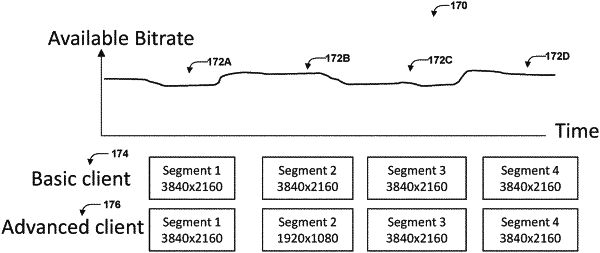| CPC H04N 21/44 (2013.01) [H04N 19/154 (2014.11); H04N 19/33 (2014.11); H04N 19/423 (2014.11); H04N 21/4331 (2013.01); H04N 21/435 (2013.01)] | 32 Claims |

|
1. A method of receiving media data, the method comprising:
determining that a media presentation includes first video data at a first spatial resolution and second video data at a second spatial resolution, the second spatial resolution being different than the first spatial resolution;
receiving, separately from data of the media presentation, an addressable resource index (ARI) track associated with the media presentation, the ARI track including:
a first quality value indicating a first quality of a first portion of the first video data at the first spatial resolution for a first playback time, and
a second quality value indicating a second quality of a first portion of the second video data at the second spatial resolution for the first playback time;
determining, based on the first quality value received in the ARI track and the second quality value received in the ARI track, that the first quality of the first portion of the first video data associated with the first playback time is higher than the second quality of the first portion of the second video data associated with the first playback time, wherein the first portion of the first video data and the first portion of the second video data are alternative encoded versions to each other of content included within the media presentation;
in response to determining that the first quality of the first portion of the first video data is higher than the second quality of the first portion of the second video data, requesting the first portion of the first video data for the first playback time;
receiving the first portion of the first video data at the first spatial resolution for the first playback time;
sending the first portion of the first video data at the first spatial resolution to a video decoder;
receiving a second portion of the second video data at the second spatial resolution for a second playback time later than the first playback time; and
sending the second portion of the second video data at the second spatial resolution to the video decoder.
|